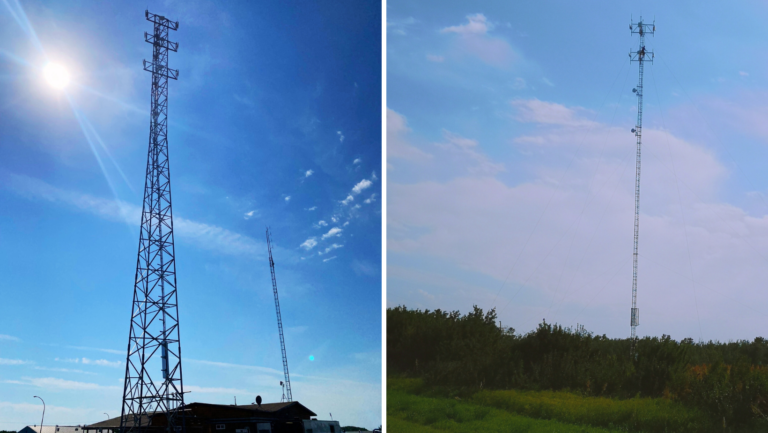The Economic Impact of Broadband
Verona Thibault
How does broadband help the economy?
When the conversation turns to infrastructure, the focus is typically on roads, bridges, water, sewer, and buildings. All important to be sure. But what is overlooked is the digital infrastructure. By definition, ‘digital infrastructure are foundational services that are necessary to the information technology capabilities of a nation, region, city or organization. By extension, digital infrastructure is necessary to the economy and quality of life of a modern nation.
A key component of this infrastructure is broadband networks; networks that connect homes, businesses, and farms with the internet. Through this connection with the internet, high-speed broadband contributes to economic growth and sustainability. By eliminating the barriers of distance and time, these networks enable rural residents to participate in the modern world’s economy. In this regard, the pandemic has afforded rural Saskatchewan a window of opportunity, a strategic advantage. Compared to many large urban centres, rural Saskatchewan is competitive by offering a lower cost of living and a high quality of life. But the caveat is that rural residents have access to critical high-speed broadband networks as do folks in the large urban centres.
Where is the business case?
Occasionally you will hear comments about digital infrastructure and broadband internet being ‘expensive’ and ‘not able to understand the business case’ for such a large investment. In our last blog, we noted that nation building infrastructures such as the railway, electrification, telecommunications, four-lane TransCanada highway and others have all been ‘expensive’. But all were foundational to enabling the country to grow and prosper. It is hard to imagine our country today without these infrastructures – and so with the modern-day infrastructure, the digital infrastructure. They fundamentally, or systemically change all aspects of society and create a new or different economy. In this case, the digital economy.
To quote Martin Barnes, the esteemed Canadian Chief Economist with BCA:
“General Purpose Technologies (GPTs) profoundly impact the way that economies and societies are structured and include: Steam power, electricity, the automobile, and the internet. GPTs lead to major new types of economic activity and social behavior and are not simply ways of doing existing tasks more efficiently.”
As stated in the Industry West magazine article, ‘Connecting the Dots’ “in 2019, Saskatchewan’s GDP was $81.54 billion. Increasing broadband access by just 10 percent could lead to another $1.64 billion annually in GDP.” On the downside, there is a question of sustainability of the current economy. It would seem logical that a failure to fully engage could cost the province an equal or greater amount going forward.
Like other basic infrastructures, value is not derived from the digital infrastructure of broadband internet itself but from the economic ecosystem it creates. Sure, we will see some jobs created in the installation, maintenance, and operation of the broadband networks, but that will be minor compared to the transformational socio-economic impacts that broadband enables in the digital economy. The transformation translates into growth, job creation, investment attraction, and most importantly, innovation.
Where does the economic development occur?
At a minimum, investing in broadband is about creating an environment to do things different – reach new markets, create more value. Our ability to leverage and grow what we have and what we do now in business, in healthcare, in education, in improving our wellbeing, is only limited by our imagination.
The biggest economic impact, however, comes from the enabling power of the internet for innovation. To put some dimensions to this, the Institute for the Future, a non-profit identifying emerging trends and their impacts on society, states that up to 85 per cent of jobs in 2030 do not exist today.
The 10 GB network (gbps) is the network of tomorrow and it is what we need to strive for today. The impacts of ‘deep learning’ and artificial intelligence into all industries is yet unknown but we must prepare for rapidly escalating standards in connectivity. If our rural areas are to sustain and prosper, broadband infrastructure investment must be a priority.
What are these trends – in general terms? One is data. Data is the new gold. Everything data – analyzing, modeling, mining, securing, storing, acquiring, and more has increasingly high value. Similarly, things that move – robotics, drones, space exploration, and more. And then there are the trends in sensors (the internet of things), in virtual reality, in artificial intelligence, in clean energy, in environmental sustainability to name but a few. But it is not about finding that ‘one thing’ for success and it certainly is not about predicting the future. With the availability of abundant, ultra-high-speed broadband, we can however begin to explore what is possible. To quote Wayne Gretzky, ‘a good hockey player plays where the puck is. A great hockey player plays where the puck is going to be.’
We will explore both leveraging and growing what we have as well as the impacts and opportunities of these trends on various sectors in future blogs.





